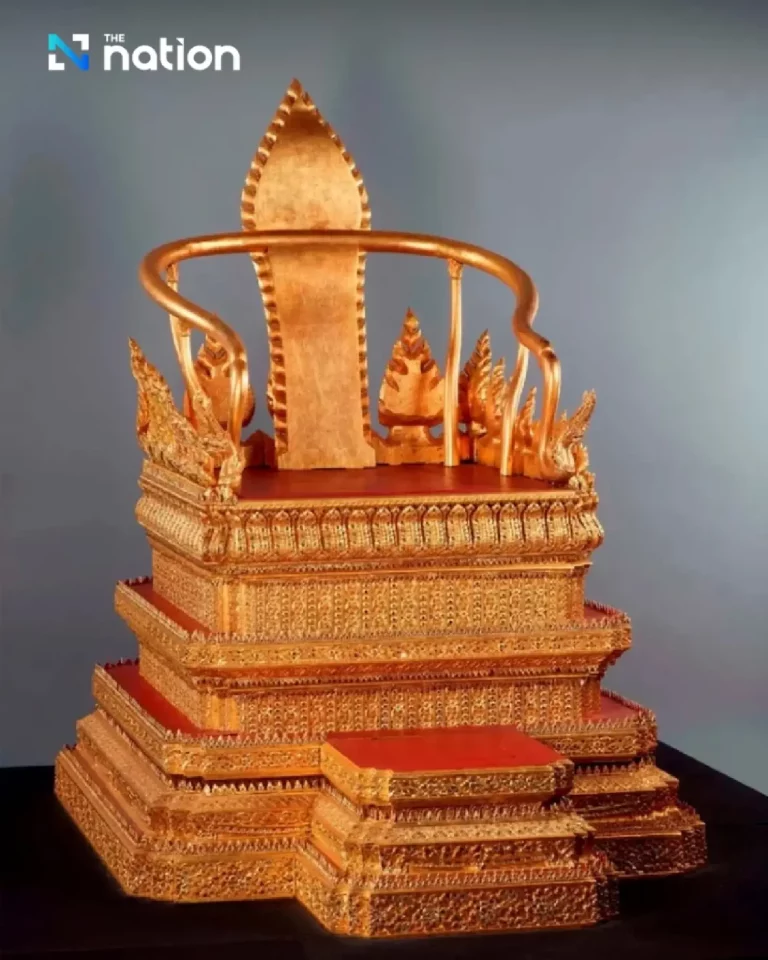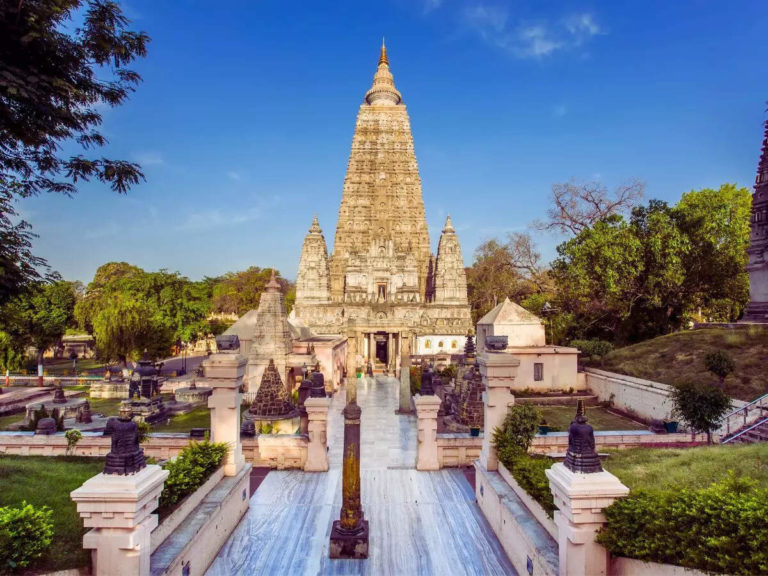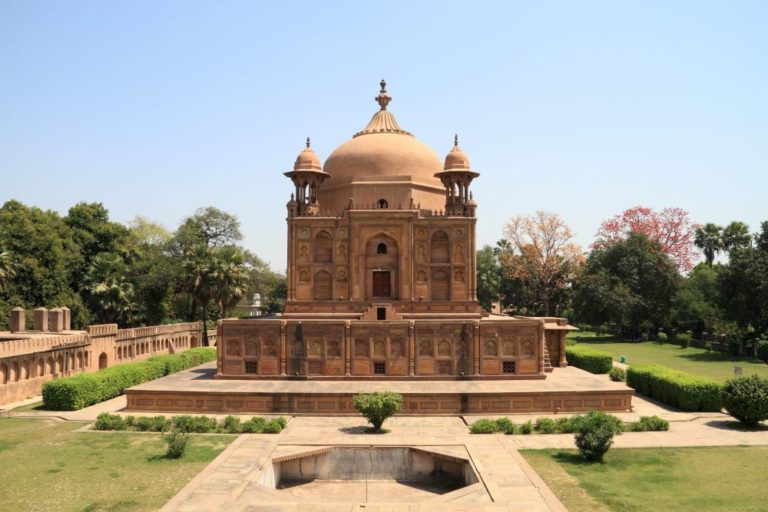Just outside My Tho City, Vinh Trang Pagoda features massive Buddha sculptures recognized globally for their scale and serenity.
A 20-meter-tall reinforced concrete statue of Maitreya Buddha at Vinh Trang Pagoda (Tien Giang Province) was named among the world’s most impressive giant Buddha statues by the UK-based Wanderlust magazine in March this year.
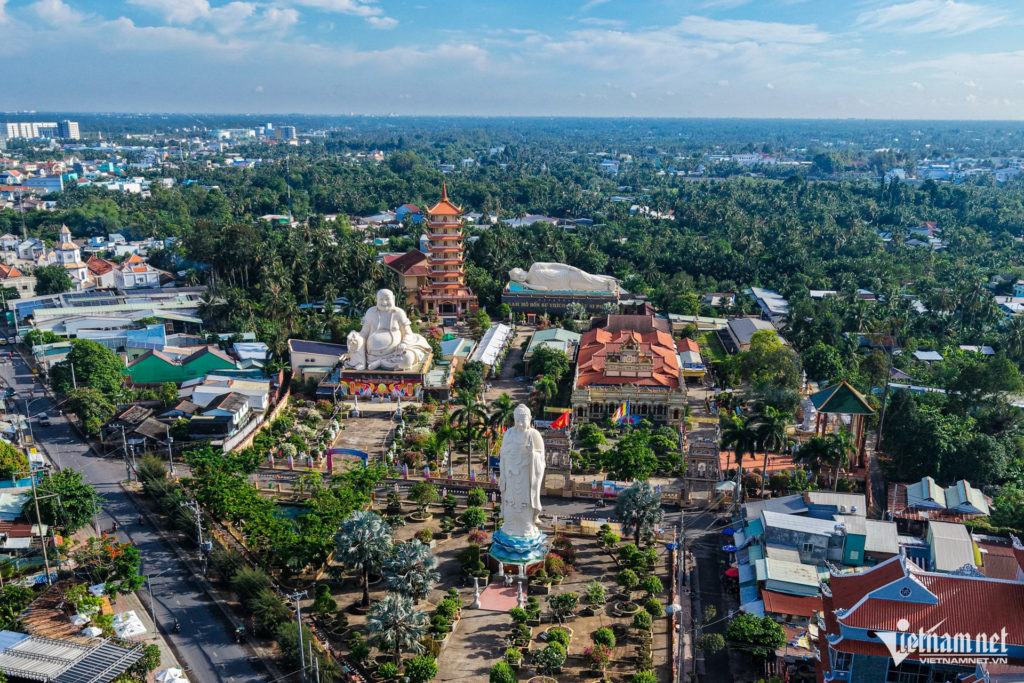

Located just about 3 kilometers from downtown My Tho in Tien Giang, Vinh Trang Pagoda is one of the largest Buddhist temples in southern Vietnam, occupying nearly 20,000 square meters. The temple houses around 60 Buddha statues crafted from various materials, dating back to the late 19th and early 20th centuries.
Seen from above, the statues of Maitreya Buddha, Amitabha Buddha, and Shakyamuni Buddha stand out strikingly.
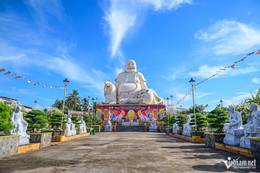


The most prominent of these is the 20-meter-tall Maitreya Buddha statue made of reinforced concrete, weighing approximately 250 tons and inaugurated in 2010. Inside the statue are the offices of the Tien Giang Buddhist Sangha and a lecture hall with accommodation for 200 people.
The Maitreya Buddha statue at Vinh Trang Pagoda has been highlighted by Wanderlust as one of the world’s most colossal and striking Buddha statues.



The reclining Shakyamuni Buddha statue, completed in 2013, is 32 meters long and 10 meters high, also made of reinforced concrete and weighing 250 tons. These grand statues are intricately carved, reflecting the serene and enlightened expression of the Buddha.
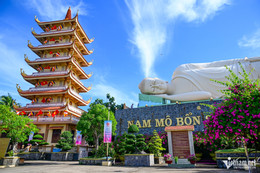


In addition to its massive and solemn Buddha statues, Vinh Trang Pagoda features a seven-story stupa at the rear called the “Thap Phat” (Seven Buddhas Tower), dedicated to seven Buddhas.
The pagoda grounds are expansive and tranquil, filled with greenery, bonsai trees, blooming flowers, and lotus ponds.
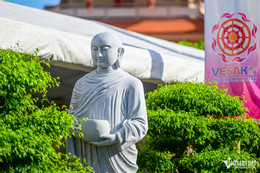

Vinh Trang Pagoda is built in the shape of the Chinese character “Quoc”, with red-tiled roofs and a blend of cement and precious wood in its construction. The structure spans 1,400 square meters and consists of four connected halls: the front chamber, main hall, ancestral house, and rear hall.
The façade, made of concrete, resembles a French-style mansion, while one section of the roof shows Khmer cultural influences. Decorative ceramic tiles originate from Japan.
The interior of the main hall and ancestral house reflects Chinese architectural styles while preserving Vietnamese cultural traits. Hanging above are numerous wooden plaques inscribed in Han characters.
The wooden pillars inside are made of rare hardwoods. Connecting the halls is a square-shaped skylight courtyard with miniature non-bo landscapes featuring mountains and temples, rich in Vietnamese identity.

Inside the main hall, many Buddha statues are displayed, made of wood, bronze, terra-cotta, and cement. These statues, dating from the late 19th century, are gilded in brilliant gold.

The pagoda’s gate is a multi-tiered structure built in 1933 by artisans from Hue. The central gate is iron-forged in French style. Initially, it held statues of venerable monks who contributed to the temple’s history, which were later replaced with Buddha statues.
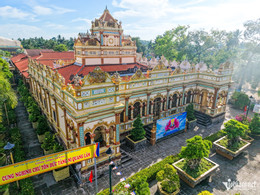

The upper tiers of the three-arched entrance gate are elaborately decorated with mythical creatures such as dragons, unicorns, turtles, phoenixes, deer, tigers, and fishermen. These sculptures are crafted from Vietnamese and Chinese porcelain, glazed in shimmering green hues.
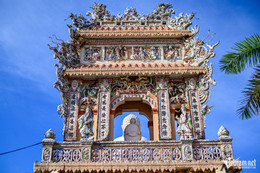



In 2007, the Vietnam Book of Records recognized Vinh Trang Pagoda as the first Vietnamese temple to combine both Eastern and Western architectural styles.

